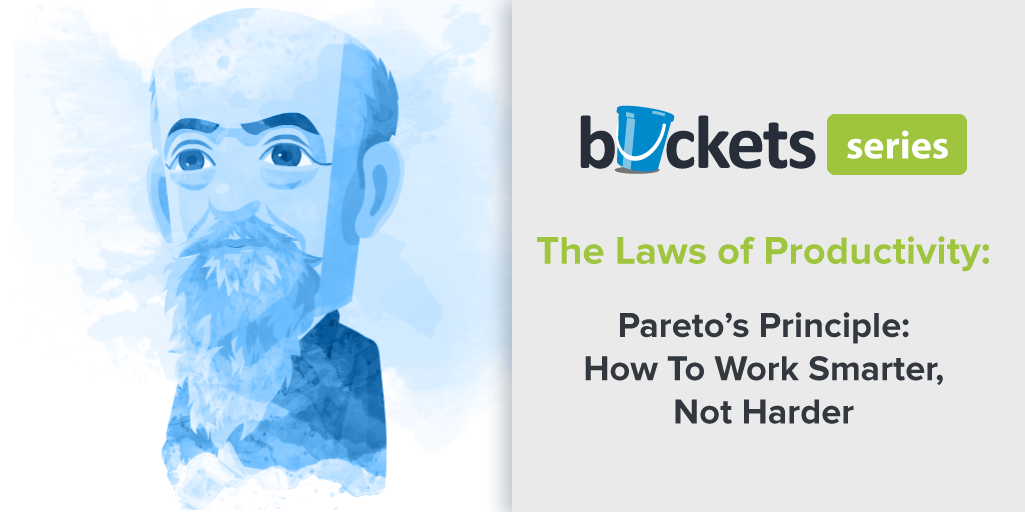Pareto’s Principle was first introduced by a guy called Vilfredo Pareto in the 19th century. Pareto was an Italian economist who came to the realization that 80% of his country’s wealth was owned by 20% of the population, which he stated in his Cours d’Economie Politique. Although, this insight actually first came to him after he noticed that 20% of the pea pods in his garden were responsible for 80% of the peas!
It soon became apparent that this statistical distribution is evident in a number of areas and not just in economics (and pea gardens!). Depending on the environment it’s being applied to, Pareto’s Principle can be expressed in a number of different ways, but the gist is that 80% of your results come from 20% of the time and effort invested, and therefore you can get similar results with less time and effort as long as that time and effort is maximized.
“20% of what you do contributes to your overall personal and professional goals.”
Author Tim Ferriss made the principle even more popular by applying it to both personal and business efficiency; he asked questions such as “what 20% of our customers are responsible for 80% of revenue?”. Ferriss then applied the principle to our personal lives by asking people to assess why they have no free time. This can be answered by using an 80/20 audit to see what you’re doing with 80% of your free time and making adjustments where necessary.
According to Ferriss, most of our endeavors can be compared to learning a foreign language. To get it right 95% of the time requires 6 months of intense effort, whereas to be correct 98% of the time can take up to 30 years. In accordance with the 80/20 rule, we should focus on that 98% level in very few instances and be happy with 95% fluency in most cases.
Using This Principle To Improve Your Productivity
Ferris suggests asking yourself these main questions in reference to the Pareto Principle:
- What 20% of sources are causing 80% of my problems and unhappiness?
- What 20% of sources are resulting in 80% of my desired outcomes and happiness?
The key to utilizing this principle in improving your productivity is to determine which tasks will create the results that will bring you closer to your overall goals and objectives, and which tasks will simply keep you busy with no real end result.
By focusing on the most important items on your task list and eliminating the rest (well, most of them), you can direct your time and effort to the tasks that matter and avoid wasting time just “clocking in hours” on tasks that make no real contribution to your end goal. In doing so, you’ll add more hours to your day and allow yourself more time to spend on other things that matter to you.
To apply this to your tasks in Buckets, identify 3–6 MITs (most important tasks) for the day, use Labels to highlight them according to priority, and focus solely on the first task to begin with.

Work on this task for at least an hour before you do anything else that day and avoid distractions such as Facebook and Twitter or incessant smartphone notifications. You can learn how to adjust your incoming Buckets Notifications over in our support section post.
What Happened When I Applied Pareto’s Principle To My Life
I had some pretty interesting revelations when I started applying Pareto’s Principle to my life in general. In Buckets, I found that 20% of my tasks in one particular Project were massively contributing to a specific goal I had, so I started prioritizing those tasks and it’s saved me a lot of time.
I also analyzed my email subscriptions and realized that I only actually opened about 20% of the the newsletters I’d subscribed to, so I unsubscribed from the rest and started looking for others that were more useful to me. To make sure I actually read the important email newsletters, I forwarded them straight from my email to my Buckets Sandbox using Sandbox Email Relay.
Oh and on a more personal level, I ditched 80% of my makeup collection (by ditched I mean, gave it to my sister!) because I realized I used the same 20% of items all of the time!
Have You Tried Applying Pareto’s Principle In Your Life?
There are so many different ways to use this principle to become super productive in all aspects for your life and I’d love to hear from any of our readers who put it into action. The more creative and innovative the better! Just leave a comment below to share your experience.
Originally published at blog.buckets.co


